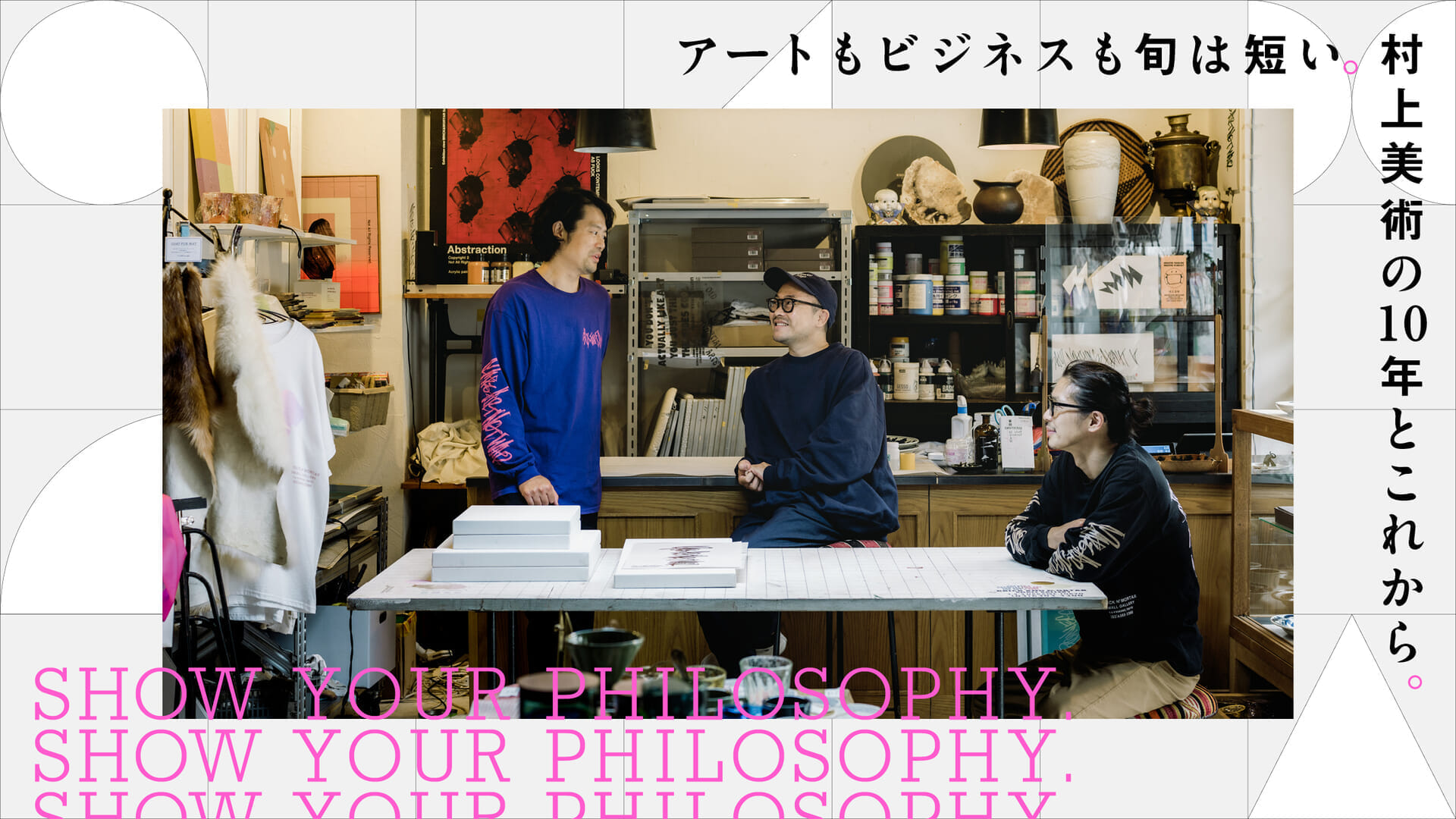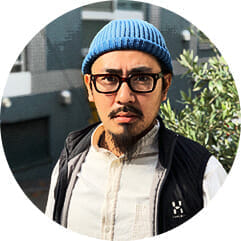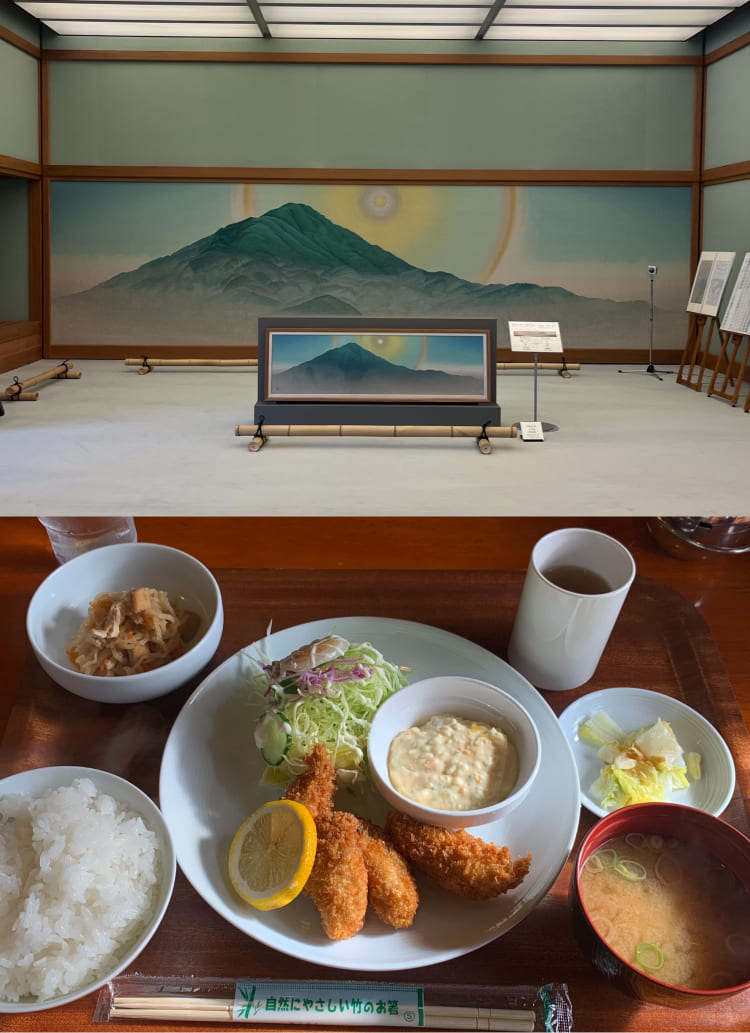. departure from the fast cycle of apparel.
Now, I would like to ask you about your company.
Zhou: First of all, since I was a student, I have been doing freelance graphic work while working as an artist.
Atsushi: I started out as an interior decorator . There I learned about sales and distribution.

Zhou: Since I was a student, I have been working in the field of graphics, mainly for clothing and accessories. After that, I worked on advertisements for Levi's and Parco. I also did a cover for Casa Brutus. I am from the Kansai region, but at the time, I might have been getting carried away, thinking that this kind of work was very Tokyo-like (laughs).
. And since we were short on staff, I wanted to hire a staff member. I had an interview at the building where the office was located at the time, and a girl came in wearing a proper suit. That was Yuya.
The apparel business I was mainly involved in at the time had a fast cycle, and a product would reach the end of its lifespan in six months. I had to do something new every six months, and I had a kind of artist's temperament, so I wanted to do something universal. . and so, finally, I started working on the development of a product.
Yuya Suzuki ( , Yuya): When I thought about what is universal and what can be properly turned around as a business, I thought it would be something related to interior design. Furniture, for example, is loved for a long time, and depending on the item, it may even be housed in a museum. . I wanted to explore the concept of monozukuri (craftsmanship), so I started developing products. That's how I got into manufacturing....
Are there any products that you have a special place in your heart?
Zhou: At first, I made a baby's slobber coat.
Atsushi: At the time, birth celebration items were an area that select stores were looking for. . But what was available in the stores were only things that were relevant to daily life from an adult's point of view. The "BAB" slobber pacifier we created (the series is still ongoing) was appreciated for its uniqueness, and it became a hit at the pointy select stores.
Zhou: . Since the droolcloth is a gift, we made it into a stylish box.
Atsushi: As luck would have it, this expanded our clientele. It was also a great experience to talk directly with retailers. It was also a good experience for me to be able to talk directly with retailers.

The long T-shirt worn by Atsushi is one of the pieces produced by Zhou.
Zhou: Next, I made picture plates in Tajimi. Overseas, people hang plates on their walls. So I used the plate as a canvas, incorporated my art into it, and commercialized it. Then, a ceramics designer named Kuntaro Abe became interested and invited me to come to Kyushu to see his ceramics. He asked me if I would like to come to Kyushu to see the ceramics.
Yuya: There, I saw the production of ceramics from the very beginning, and learned about various characteristics that differ from those of graphics, such as the suitability of materials. That is when my view of things changed.
Zhou: Arita and Hasami, for example, have a history of 400 years, and it was important to know how to deal with that. It was impossible to create something without thinking about it. For example, Arita porcelain is now available in plain colors, but if that becomes the mainstream, the work of Arita's dyed-in-the-wool porcelain will disappear. Tradition must be preserved, so if I were to work in Arita, I would preserve the Arita way of doing things, but add my own essence to it.

Zhou: For example, there is the octopus arabesque, which is also depicted on the soba boar cups from "AMABURO. In Vietnam, India, and Mesopotamia, there are arabesque patterns and patterns that developed from them, and arabesque patterns have also developed in Japan. . I don't know if it is because I am a modern person or an artist, but I think about things in layers. So I asked a craftsman to let me put a graphic on top of the traditional arabesque pattern on Arita-yaki porcelain, and I was very nervous. . But after that, we went out for a drink, and we soon got to know each other.
Atsushi: However, at first I was turned away, thinking that it was not a good idea to add something to something that was already finished. . At that time, most of the items on display in select stores were Western tableware. In such a situation, it was difficult to bring out the best of Japanese tableware as it was, so I tried to fuse traditional items with contemporary art and design. I tried it, and it was accepted.

Zhou: When I went to Arita , I found a large Arita porcelain plate sitting in the rain by the eaves. I asked him what happened to them. I asked him, and he replied, "The nuclear family has been spreading, and we don't need the platters anymore. . Because of this, I wanted to convert the platter, which had become a negative legacy of the modern era, into art. There were social issues that could be talked about with plates. Arita is characterized by the blue color first, and then gold and red are added. First, you put the blue and leave it alone, but it's very graphical.
Atsushi: Also, the bean-plate is very impressive. Mame-dare ... we didn't call them that back then, but small plates. One day, I was looking at pottery literature and learned that there was a type of dish called a teshio dish . And I learned that in some regions, they call them mame-asara (bean dishes). I thought that mame-asara were cute, and, just like the soba-no-inokuchi (buckwheat noodle bowl), I made the most of the original painting and put graphics on them. After releasing the mame-dara, the mame-dara boom spread rapidly.
Zhou: That was around 2010, I think, about before and after we turned it into a company.
. Your artist works also come in various forms, such as graphic works and works on plates, don't they?
Zhou: Yes, that's right. I remember that I was taught about Arita and Mashiko pottery as a child, partly because of my mother's influence.
I guess it must have been interesting to work in a different term and cycle from apparel.
Yuya: The fact that they can be used for a long time is significant.









